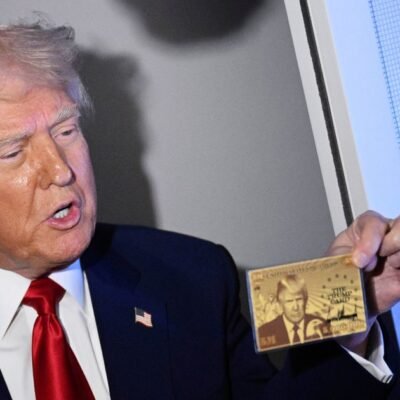The advertising industry has never been better equipped for sustainable action. Tools for measuring emissions are maturing, collaborative frameworks are taking shape and climate commitments are multiplying across the sector.
Yet, marketing conversations about sustainability have grown notably quieter. Companies talk about the environment 76% less than they did three years ago. While commitment grows behind the scenes, public communication has retreated into ‘green hushing’ – a silence born from fear of scrutiny, accusations of greenwashing, or simply getting it wrong.
So, how can brands move from caution to confidence? Marketing leaders shared their strategies for authentic, effective sustainability communication that drives both business results and environmental impact.
 The foundation of confident sustainability messaging is rock-solid evidence. “Get a grip with green washing,” says Seb Munden, global chair of Ad Net Zero. “You’ve got to see the hard evidence. Once you’ve seen it, put it in your advertising with confidence. If you haven’t seen the evidence, and it’s corporate hearsay, do not do it.”
The foundation of confident sustainability messaging is rock-solid evidence. “Get a grip with green washing,” says Seb Munden, global chair of Ad Net Zero. “You’ve got to see the hard evidence. Once you’ve seen it, put it in your advertising with confidence. If you haven’t seen the evidence, and it’s corporate hearsay, do not do it.”
Most European regulators will provide free advice on sustainability claims, removing the excuse of uncertainty. But evidence might not be enough for messaging to land. Mélanie Brinbaum, Europe CMO at Nestlé, learned the hard way. Despite backing up claims with data and figures proving that Nespresso capsules have a lower carbon footprint than other brewing methods, consumer perception remained unconvinced. “We ran campaigns with rationals and partnerships and failed miserably,” she says.
The breakthrough came when Nestlé shifted its approach. Rather than leading with data, it focused on emotional storytelling, getting George Clooney in an ad with the message “don’t forget to recycle” and using celebrities to bring emotion into sustainability messaging. “That’s when perception shifted,” Brinbaum says.
 The planet can’t wait for perfect solutions, and neither should brands. Adam Elman, director of sustainability EMEA at Google, emphasises that “sustainability is a journey, not a destination, and we’ve just got to get started.”
The planet can’t wait for perfect solutions, and neither should brands. Adam Elman, director of sustainability EMEA at Google, emphasises that “sustainability is a journey, not a destination, and we’ve just got to get started.”
Google’s carbon footprint calculator for advertisers exemplifies this approach. Carbon Footprint for Google Ads took over a year to develop, but the team launched knowing it didn’t have all the features they wanted to build in. “We had to work in partnership with others to really get something out there that isn’t perfect but actually gets it started,” says Elman.
Brinbaum advocates for the power of partnerships for brands struggling with risk-averse cultures. “Find the right partners. You can even create a sustainability advisory board,” she suggests. “Find people who don’t need to be paid to be your partners, because when there is controversy, they are there with you in the bad times as well.”
The most compelling sustainability communications tie environmental benefits to clear business outcomes. Research from Ipsos shows that sustainability messaging only outperforms when combined with brand benefits – the sweet spot where consumer and planetary good align. “Sustainability is not an advantage per se,” says Arnaud Debia, global creative development director at Ipsos. “You need to be empathetic and creative.”
Corona’s “From The Natural World” positioning exemplifies this approach, repositioning the brand around durability and natural ingredients while driving 15% growth. The campaign works because “when you say made for nature, that’s good for me, that’s good for the planet,” Debia says.
 Sustainability should start with brands, not consumers. “You have to walk the walk before asking others to be involved,” Debia adds. “Start first as a brand, then ask consumers to join the challenge.”
Sustainability should start with brands, not consumers. “You have to walk the walk before asking others to be involved,” Debia adds. “Start first as a brand, then ask consumers to join the challenge.”
Indeed and Google have taken this integration further, developing a custom algorithm that optimises YouTube advertising based on energy grid usage. When energy usage is high, the system adjusts advertising to run campaigns during more efficient periods. The result? A 20% reduction in emissions per million dollars spent while maintaining ROI targets.
“There is a way of thinking about sustainability and tying that to business outcomes,” says Anne Coghlan, co-founder and CEO of Scope3. “You can come for the performance and stay for the sustainability.”
But, the growing use of AI brings new challenges. “AI is a grenade in all of the ways that we do things,” warns Coghlan. But Elman looked to bring clarity to some of the “newspaper headlines” around AI’s carbon footprint: “Data centres around the world account for about 1.5% of global electricity use, and AI is a fraction of that.”
While brands can compete on sustainability innovation, some challenges require collective action, such as the measurement of media emissions. With individual agencies creating different calculators and methodologies, some media plans showed 4x differences in carbon footprint calculations for similar campaigns, clearly unsustainable for the industry.
This collaborative imperative extends beyond measurement. Carmen Graf, global VP of marketing at Indeed, highlighted the value of sharing innovations: “We want the planet to be better overall. We will share all of our information and algorithms with you because you can share them with us as you create new things.”

Practical next steps for marketers
For brands ready to act, the experts offer clear guidance:
Go for waste first: “If you’re looking for something to do next, go for waste,” says Munden. Eliminating inefficient media spend delivers immediate environmental and business benefits.
Set measurable KPIs: “The biggest lever in terms of moving the needle will be setting KPIs,” says Ozlem Senturk, senior partner, global sustainable transformation practice, Kantar. Integrating sustainability metrics into performance reviews drives real organisational change.
Protect the change makers: “As marketing people, we need to be brave, courageous, and be the voice of the long term versus the short term,” advises Brinbaum. Some projects require sustained internal advocacy; her example of Nespresso’s traceable Congolese coffee took 15 years to complete.
Focus on the convincible middle: “We should stop preaching to the already converted,” says Senturk. The opportunity lies with consumers who can be convinced when sustainability is made relevant to their needs.
Speakers:
- Adam Elman, director of sustainability, EMEA, Google
- Anthony Falco, global media sustainability director, Advertising Association
- Arnaud Debia, global creative development director, Ipsos
- Anne Coghlan, co-founder and CEO, Scope3
- Carmen Graf, global VP of marketing, Indeed
- David George, CEO, Pixability
- Eric Shih, COO, Cedara
- Estee Cheng, managing director of ads sustainability & sellside, Google
- Mélanie Brinbaum, Europe CMO, Nestlé
- Michael Todd, global director of industry relations, Google
- Ozlem Senturk, senior partner, global sustainable transformation practice, Kantar
- Seb Munden, global chair, Ad Net Zero






